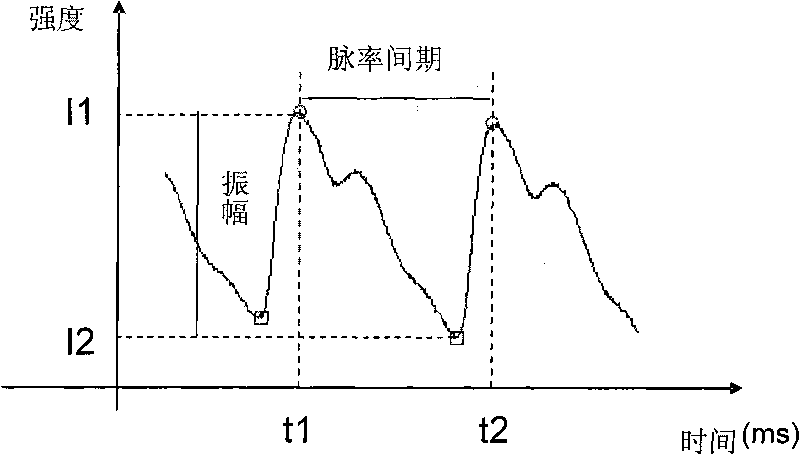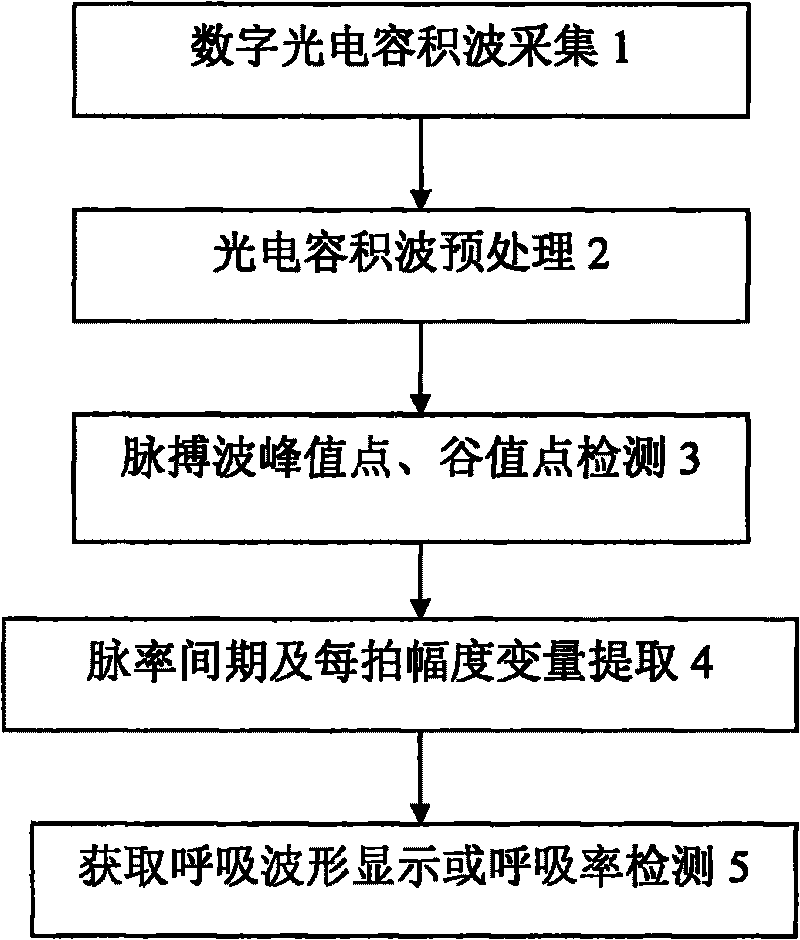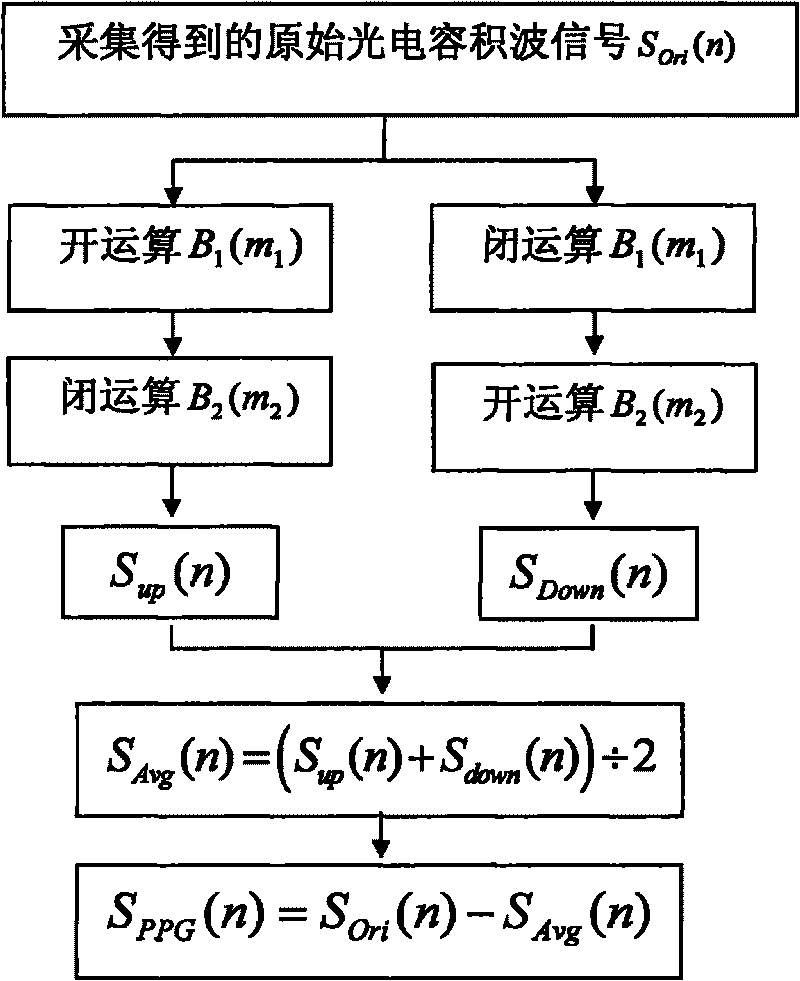Photoelectric volume wave-based breathing rate monitoring method
A technology of photoplethysmogram and respiration rate, which is applied in the evaluation of respiratory organs, etc., can solve the problems that there is no clear separation between two waveforms, and the influence of respiration waves cannot be ignored. It is convenient for single-chip implementation, wireless detection and networking. The effect of less application and resources
- Summary
- Abstract
- Description
- Claims
- Application Information
AI Technical Summary
Problems solved by technology
Method used
Image
Examples
Embodiment Construction
[0044] The present invention will be described in further detail below in conjunction with the accompanying drawings and embodiments.
[0045] Such as figure 2 Shown, a kind of respiration rate monitoring method based on photoplethysmography, comprises the following steps:
[0046] Step 1, collect the original digital photoplethysmographic signal. In the present invention, it is a photoplethysmic wave signal that reflects changes in the blood volume of the microvascular bed on the surface of the fingertips, wrist or forehead through red light or near-infrared light projection or reflection. Specifically It includes not only the A / D conversion of the analog photoelectric signal, but also the digital photoelectric product wave signal obtained by the light-frequency conversion method. The signal is required to be the original photoplethysmogram signal with a sampling frequency of 500 Hz and above without filtering or other processing, which contains the respiratory information t...
PUM
 Login to View More
Login to View More Abstract
Description
Claims
Application Information
 Login to View More
Login to View More - Generate Ideas
- Intellectual Property
- Life Sciences
- Materials
- Tech Scout
- Unparalleled Data Quality
- Higher Quality Content
- 60% Fewer Hallucinations
Browse by: Latest US Patents, China's latest patents, Technical Efficacy Thesaurus, Application Domain, Technology Topic, Popular Technical Reports.
© 2025 PatSnap. All rights reserved.Legal|Privacy policy|Modern Slavery Act Transparency Statement|Sitemap|About US| Contact US: help@patsnap.com



